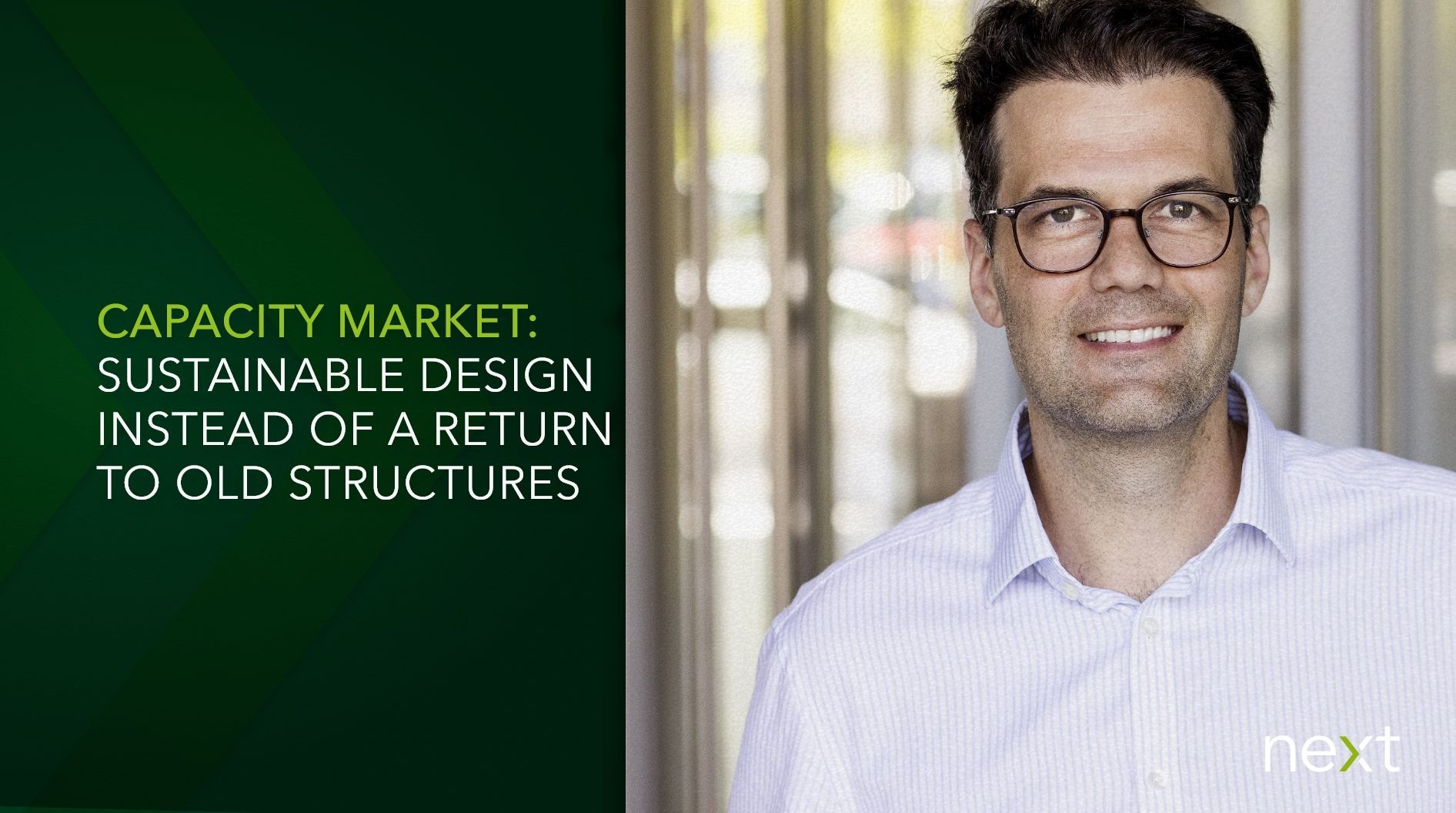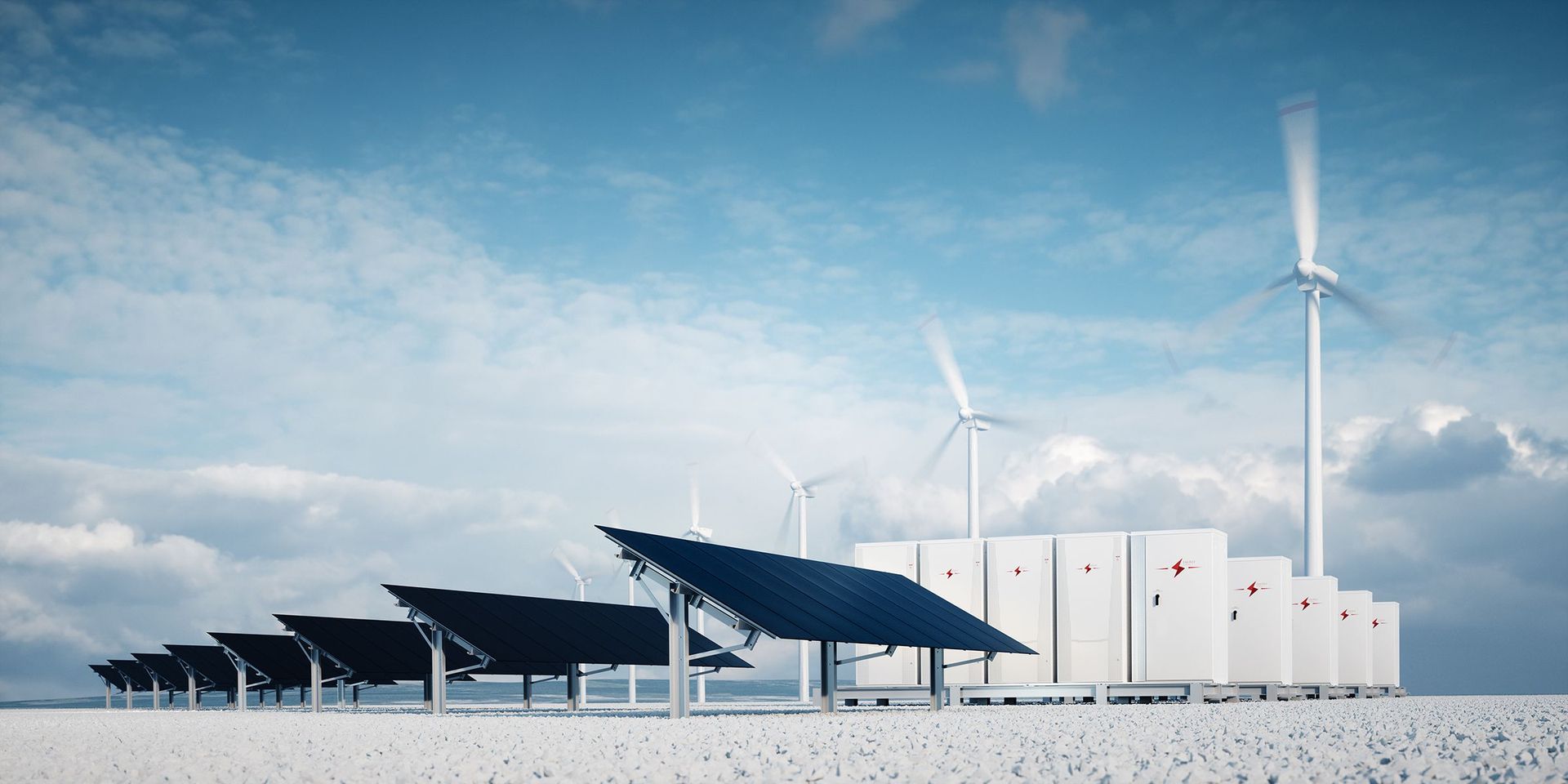Capacity Market: Future-proof Design Instead of a Step Back into Old Structures
The German energy sector is facing a fundamental change: Until now, the principle of the Energy-Only Market (EOM) has applied, where electricity producers are only paid for the energy actually delivered. With the planned introduction of the capacity market starting in 2028, the pure provision of secured power plant capacities will also be remunerated – regardless of whether these are used for electricity production or not. This is intended to create investment incentives for the construction of new power plant capacities that can step in when not enough energy from renewable sources is available.

Market Design Debate
How this capacity market will be concretely designed was discussed last year as part of the platform for a climate-neutral electricity system (PKNS) – market participants like us have also contributed statements to the debate. In an options paper published in the summer of 2024, the Federal Ministry for Economic Affairs recently expressed a preference for one model. With the failure of the current government, however, the cards may now be reshuffled. It is worth taking another look at the different options.
Central, Decentralized, or Combined?
In addition to the central capacity market, where a central authority determines and procures the necessary capacities, the PKNS discussed a decentralized variant and a hybrid model. How should the variants be categorized, especially with regard to the progress of the energy transition?
A purely central capacity market carries the risk of creating a bureaucratic tender system that favors inefficient conventional power plants and creates barriers for innovative technologies. For example, it is questionable what the chances are for market participation for storage or flexibility on the demand side, as their integration is very challenging. A tendering of overcapacities could also arise from the model, with effects on the pricing of other markets.
Capacity mechanisms reduce scarcity prices, which in turn means that technologies that are less well integrated into the central model will also be less profitable in the energy-only market. In the end, such a central model ensures that fossil power plants are operated for longer, slowing down the energy transition.
In contrast, the decentralized approach seems to be the more efficient way to secure capacities. The actors involved decide individually what the best and most cost-effective form is to meet demand. This makes the availability of capacity more market-oriented. The competition created by this could promote new business cases and innovations. In addition, this model is more likely to create incentives to tap flexibility potentials on the demand side. Critics of the concept raise the question of whether a decentralized system can provide sufficient secured capacity for supply security.
A combined variant is therefore the preferred solution of the Federal Ministry for Economic Affairs and is intended to combine the best of both worlds: central tenders for predictable revenues/performance on the one side, incentives for flexibility on the demand side on the other. However, it is feared that such a combined capacity market would come with an excessive level of complexity. Because here, two already complex models must be brought together, and solutions for their interaction must be developed. The hybrid variant could also require long coordination processes, making implementation by 2028 questionable.
Consideration of Existing Flexibilities
Another open question is what role different technologies will play in the capacity market. How will existing plants, such as biomass and combined heat and power (CHP), be integrated into the new market? These flexible power plants play an important role today in the already existing capacity market for balancing power.
Also, in the short-term electricity markets, such as the Day-Ahead and Intraday markets, decentralized flexible players help balance generation and price fluctuations due to volatile feed-ins. It is therefore important to consider these players in the capacity market and not to push existing flexibilities out of the market.
Read more
Less Bureaucracy, More Investment Incentives
What is crucial for the design of the new capacity market is that innovations are promoted, flexibility is rewarded, and legal certainty is established quickly. Investment incentives for the construction of new capacities should be created, but flexibility potentials on the consumer side and for flexible existing plants should also be integrated. It should be ensured that all flexibility options are encouraged in a fair and technology-neutral framework. This can be better achieved through the decentralized approach or by emphasizing the decentralized component in the combined capacity market.
Complexity, bureaucracy, and a high degree of regulation are risk factors that could hinder the implementation of an efficient market design. In particular, a highly regulated capacity market would miss its actual goal: the creation of a dynamic and competitive market in which a sensible interplay of renewable energies, storage, flexible consumers, and backup power plants is formed. In the design of the capacity market, therefore, a delicate balance is required to ensure that the market does not become a brake on the energy transition but contributes to a swift and successful transformation of our energy system.
Originally published on: www.energie-klimaschutz.de
More information and services



